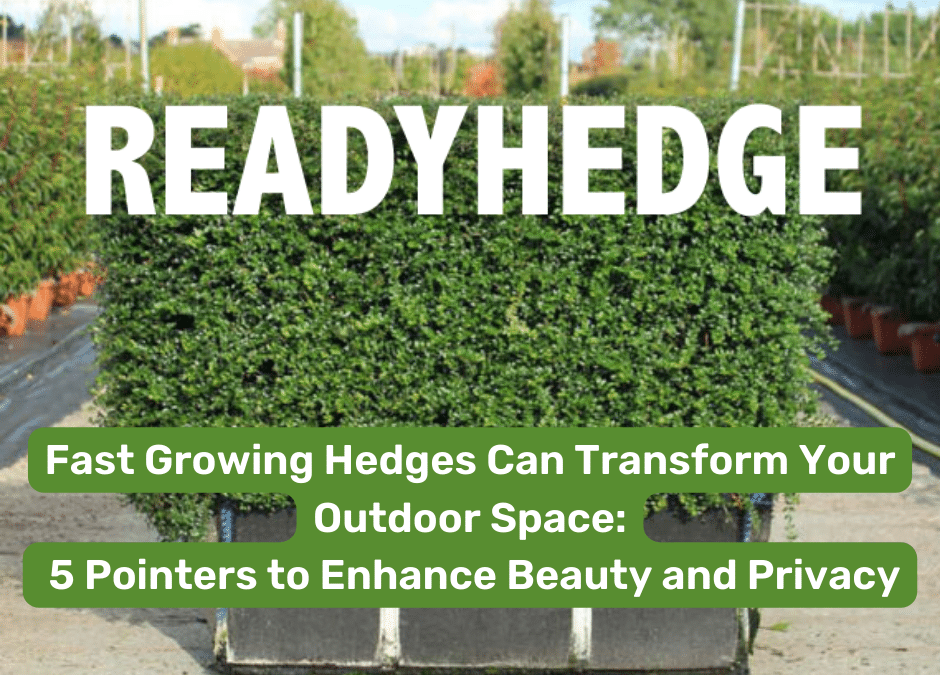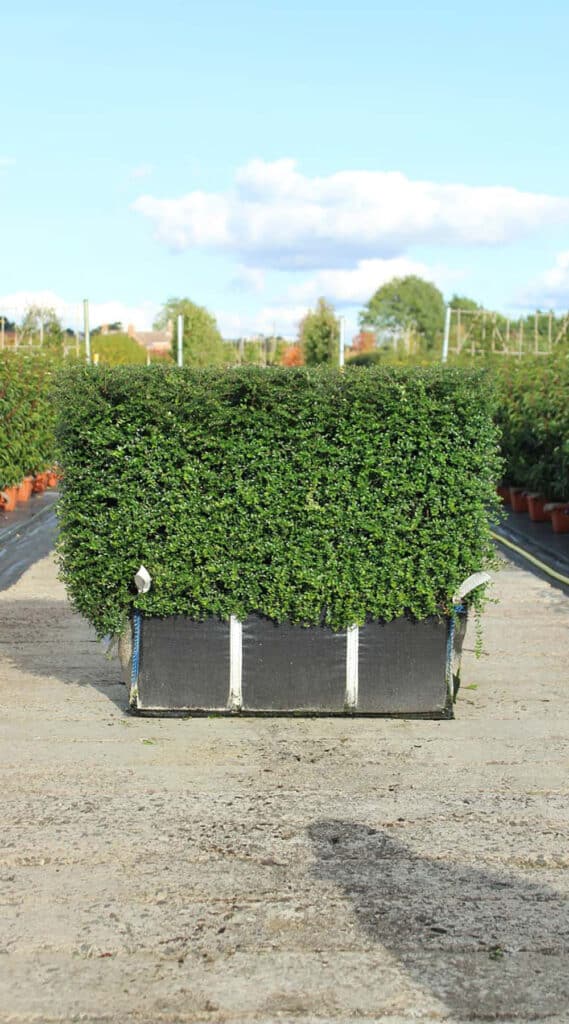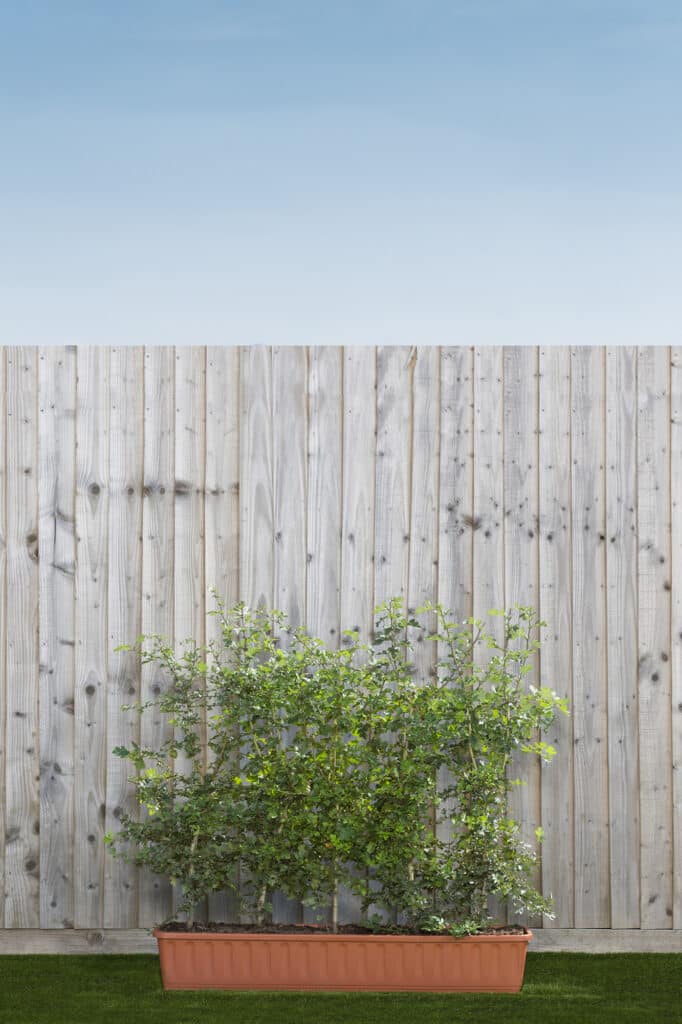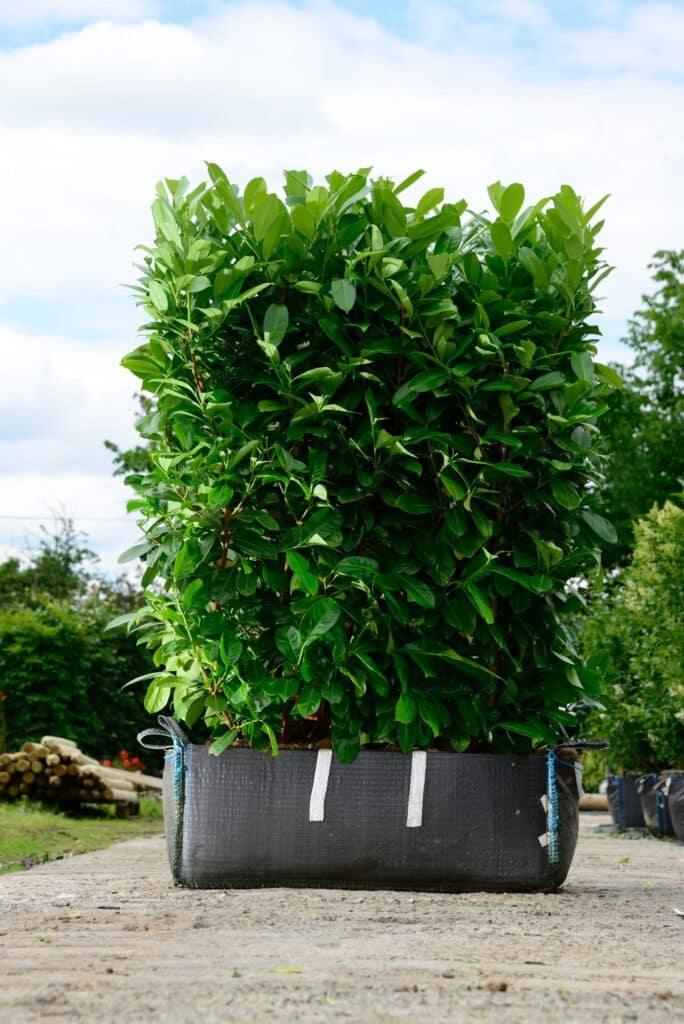Do you want to create natural boundaries, add privacy, or enhance the beauty of your outdoor space quickly? Fast growing hedges are the perfect solution. With their rapid growth rate and lush foliage, these hedges can transform your garden in no time. In this comprehensive guide, we will explore the benefits of fast growing hedges, provide essential information to help you choose the right varieties for your needs, offer expert tips on planting and care, and delve deeper into the advantages of fast growing hedges for privacy and noise reduction.
1. Why Choose Fast-Growing Hedges?
Quick Results
If you’re eager to enjoy a lush and green garden, fast growing hedges are your best bet. Unlike slow-growing plants that take years to reach maturity, these hedges can establish themselves and provide privacy and beauty within a short period. Whether you have a special event coming up or simply want to enjoy the benefits of a beautiful garden sooner rather than later, fast growing hedges deliver quick results.
Privacy and Security
Creating a private and secure outdoor space is a top priority for many homeowners. Fast growing hedges offer excellent privacy benefits, acting as a natural barrier between your property and the outside world. These hedges quickly fill in and become dense, creating a shield against prying eyes and offering a peaceful and secluded environment for you and your family. Some varieties also add a natural layer of security, with prickly thorns and tough branches, hedging can create a natural barrier that is much more environmentally and aesthetically pleasing than a fence.
2. Fast Growing Hedges for Privacy
These types of hedges are an excellent choice as they provide fast-growing plants for privacy from neighbours, creating a secluded and tranquil outdoor space quickly.
a) Lonicera nitida hedging is an excellent choice for those seeking fast-growing hedges for privacy. This small-leaved evergreen hedge boasts dense foliage, providing an effective screening option for low to medium-height hedges. Its rapid growth rate ensures quick privacy coverage, allowing you to create a secluded and peaceful outdoor environment.
To maintain its desired shape, regular trimming is recommended for the Lonicera nitida hedge. It can be kept around 60 cm tall, making it ideal for low parterre style instant hedges. If allowed to grow taller, up to approximately 150 cm, it is advisable to cut it with a taper to allow light penetration into the base and prevent bare spots. This versatile hedge plant responds well to taper trimming at all heights, ensuring optimal growth and appearance.
Considered a viable alternative to Common Box (Buxus sempervirens), Shrubby Honeysuckle (Lonicera nitida) Instant Hedging stands out with its small leaves, making it an attractive option for creating formal hedges with crisp, sharp edges. It is adaptable to various soil types and can tolerate light shade, offering flexibility in placement within your outdoor space.
While the Shrubby Honeysuckle lacks the large, highly scented flowers found in climbing honeysuckles, it compensates with its ease of maintenance and suitability for all reasonable soils. In its untrimmed state, it produces inconspicuous flowers followed by black berries. This resilient hedging plant thrives in different soil conditions, providing reliable and satisfying results.
b) Hawthorn (Crataegus monogyna) is another excellent hedge option that offers privacy benefits. Also known as thorn, quickthorn, or May, this British native plant has long been used as a field boundary hedge, often interplanted with other species. One of the key features of Hawthorn is its thorny nature, with rigid thorns present on the stems. This makes it an ideal choice for areas where security is a priority. The thorns act as a deterrent, creating a natural barrier that helps to protect your property and maintain privacy.
Depending on your specific needs, Hawthorn can be managed in different ways to enhance its privacy-enhancing qualities. Regular trimming can be employed to encourage thickening, resulting in a dense and attractive garden hedge. However, it’s important to note that frequent trimming may reduce the number of flowers and fruit produced.
Alternatively, Hawthorn can be “laid” using traditional hedging techniques, which involve partially cutting and bending the stems to create a tightly interwoven and secure hedge. This method is particularly effective for achieving a dense and impenetrable barrier, suitable for containing animals or deterring unwanted intruders.
Aside from its privacy benefits, Hawthorn instant hedge is highly adaptable and easy to grow. It thrives in various soil conditions, including very dry or moist soil, making it a versatile option for different garden environments. Furthermore, Hawthorn exhibits excellent tolerance to environmental factors such as coastal exposure and pollution commonly found in industrial or urban areas. By planting Hawthorn hedges, you not only create a private space but also contribute to reducing pollution levels, as the plant helps filter and cleanse the air in its vicinity.
c) Common Laurel (Prunus lau. rotundifolia), also known as Cherry laurel, is a popular choice for creating instant privacy in your garden. This large-leaved evergreen plant grows vigorously and can spread wide if not controlled, reaching heights of around 5 meters. However, when used as a hedge, it can be easily maintained at a more manageable height of 150cm to 200cm. The leaves of the Common Laurel are large, and leathery, and display a glossy dark green colour. This attribute makes it an excellent screening plant, providing a dense barrier that effectively shields your garden from prying eyes. Whether you want to enjoy some peaceful moments or create a secluded outdoor space for relaxation, the Common Laurel hedge offers the privacy you desire.
3. Fast-Growing Hedges for Noise Reduction
In addition to providing privacy, fast growing hedges can also act as effective sound barriers. If you live in a noisy neighbourhood or near a busy road, these hedges can help reduce unwanted noise and create a more peaceful environment. Consider the following fast growing hedge options for noise reduction:
a) Privet (Ligustrum): Privet hedges not only offer privacy but also provide excellent noise reduction benefits. With their thick foliage and layered branches, they absorb and deflect sound effectively. Common privet (Ligustrum vulgare) and Japanese privet (Ligustrum japonicum) are popular choices known for their noise-reducing properties.
b) Lonicera nitida hedging: Due to its dense foliage and fast growth rate, lonicera ntida is not only great for privacy but also effective in reducing noise. The thick barrier it creates can help buffer and dampen sounds, creating a quieter and more peaceful outdoor environment.
c) Common Laurel hedge In addition to its privacy benefits, the also boasts impressive noise-cancelling qualities. The foliage of this plant is not only visually appealing but also acts as a soundproofing agent. The large leaves absorb and trap sound, preventing it from reflecting into the surrounding area.
This makes the Common Laurel hedge an ideal choice if you live near a busy road, noisy neighbours, or any other source of unwanted sound. By planting this hedge, you can create a more serene and peaceful environment within your garden, allowing you to unwind and enjoy moments of tranquillity. So, not only does the Common Laurel hedge offer privacy, but it also helps to reduce noise pollution, providing you with a more enjoyable outdoor space.
4. Choosing the Right Fast Growing Hedges
With numerous options available, it’s essential to choose the right hedges for your specific needs and garden conditions. Consider the following factors when selecting your hedges:
- Purpose: Determine the primary purpose of your hedge. Are you looking for privacy, noise reduction, windbreaks, or simply enhancing the beauty of your garden? Clarifying your goals will help you make informed decisions about the hedge varieties that best align with your needs.
- Garden Conditions: Assess your garden’s environmental conditions, including sunlight exposure, soil type, and climate. Some hedges thrive in full sun, while others can tolerate shade. Similarly, certain varieties prefer well-draining soil, while others can adapt to various soil types. By understanding your garden’s conditions, you can select hedges that are well-suited to thrive in your specific environment.
- Growth Rate: Consider the growth rate of the hedge species you’re interested in. Some varieties can grow several feet per year, while others have a more moderate growth rate. If you’re looking for rapid results, opt for faster-growing species. However, keep in mind that fast growing hedges may require more frequent maintenance to keep them in check.
- Maintenance Requirements: Different hedge species have varying maintenance needs. Some may require regular pruning, shaping, or pest control, while others are relatively low-maintenance. Assess your ability and willingness to devote time and effort to hedge maintenance to ensure you choose varieties that align with your preferences.
- Aesthetics: Lastly, consider the visual appeal of the hedge species you’re considering. Look for hedges with foliage colours and textures that complement your garden design and overall aesthetic. Whether you prefer lush green foliage, flowering hedges, or a mix of different textures, there’s a fast growing hedge that will meet your aesthetic preferences.
5. Planting and Care Tips
Once you’ve selected the right hedges for your garden, it’s important to provide proper care to ensure optimal growth and long-term health. Follow these tips to help your hedges thrive:
- Site Selection: Choose a location that provides adequate sunlight for the specific hedge species you’ve selected. Most hedges prefer full sun to partial shade conditions. Additionally, ensure the soil has good drainage to prevent waterlogging, as excessive moisture can harm the roots.
- Soil Preparation: Prepare the soil before planting your hedges. Remove weeds, rocks, and debris and amend the soil with organic matter to improve its structure, drainage, and nutrient content. This will create an optimal growing environment for your hedges.
- Proper Planting Techniques: Dig a trench or individual holes to accommodate the root balls of your hedge plants. Place the plants at the appropriate spacing recommended for the selected species. Backfill the holes with soil, ensuring the roots are properly covered, and gently firm the soil around the base of each plant.
- Watering: Newly planted hedges require regular watering to establish their root systems. Water deeply and thoroughly, ensuring the entire root zone is adequately moistened. Monitor the moisture level of the soil and adjust the watering frequency as needed, taking into account rainfall and weather conditions.
- Mulching: Apply a layer of organic mulch around the base of your hedges, leaving a small gap around the stems to prevent moisture-related issues. Mulch helps conserve soil moisture, suppress weed growth, and regulate soil temperature.
- Pruning and Maintenance: Fast growing hedges often benefit from regular pruning to maintain their desired shape, density, and height. Prune your hedges during the appropriate times of the year, following specific guidelines for each species. Regularly monitor for pests, diseases, and nutrient deficiencies, and take appropriate measures to address any issues that arise.
- Feeding: Provide your hedges with the necessary nutrients for healthy growth. Apply a balanced, slow-release fertiliser formulated for shrubs and hedges according to the manufacturer’s instructions. Additionally, consider conducting a soil test to identify any nutrient deficiencies and adjust your fertiliser application accordingly.
Conclusion
Fast-growing hedges have the power to transform your outdoor space, offering privacy, beauty, and environmental benefits. By selecting the right hedge varieties, planting them correctly, and providing proper care, you can enjoy a lush and vibrant garden in no time.
At Readyhedge, we are dedicated to providing quality instant hedging and screening solutions. Our extensive stock list offers a wide range of fast-growing hedge varieties suitable for all garden types. Whether you’re looking for privacy hedges, noise-reducing hedges, or simply want to enhance the beauty of your outdoor space, we have the perfect options for you.
Browse our stocklist to explore the full range of fast-growing hedges we offer. Each variety is accompanied by detailed information on ideal planting conditions, growth habits, and maintenance requirements. Our knowledgeable team is always ready to provide advice and guidance to help you make the best choices for your garden.
Transform your outdoor space with fast-growing hedges. Experience the joy of a lush and beautiful garden while enjoying the benefits of privacy, noise reduction, and environmental enhancement. Contact Readyhedge today at 01386 750 585 or visit our website to explore our stocklist and start your hedge transformation journey.
FAQ
1. What is the fastest growing hedge for privacy? The Leylandii (Cupressocyparis leylandii) is known as one of the fastest growing hedges for privacy. It can grow up to 3 feet per year, providing a dense and tall barrier for privacy.
2. What shrub grows the fastest? The Privet (Ligustrum) shrub is renowned for its fast growth rate. It is a versatile and hardy shrub that can grow at a rapid pace, making it an excellent choice for creating hedges or screening.
3. What is the fastest growing evergreen hedge tree? The Western Red Cedar (Thuja plicata) is considered one of the fastest growing evergreen hedge trees. It has an impressive growth rate and can reach considerable heights, providing year-round privacy and greenery.
4. What is the best shrub for a privacy fence? The Laurel (Prunus laurocerasus) shrub is often regarded as an ideal choice for a privacy fence. It grows quickly and forms a thick, lush foliage that offers excellent screening and privacy.
5. What is the fastest growing hedge in the UK? The English Yew (Taxus baccata) is known for its relatively fast growth rate among native UK hedges. While it may not grow as rapidly as some other species, it offers longevity, dense foliage, and a classic aesthetic appeal.
Please note that the growth rate may vary depending on factors such as climate, soil conditions, and maintenance practices. It’s advisable to consult with a horticulturist or nursery specialist to determine the best options for your specific location and requirements.




